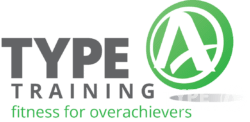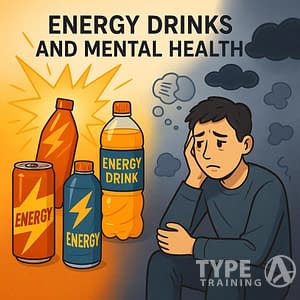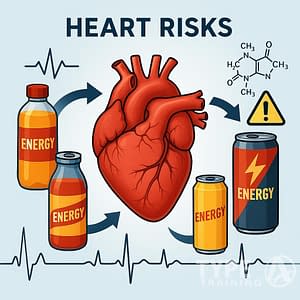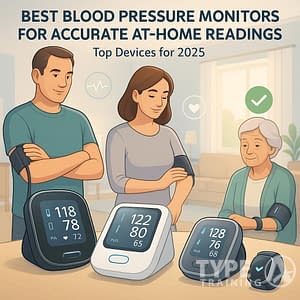A lot of Manhattan professionals deal with pain and movement issues thanks to desk jobs, endless commutes, and the general chaos of city life. Corrective exercise programs have made a real difference, cutting kyphosis angles by impressive amounts and improving balance in just 8-12 weeks.
Many professionals have found that incorporating Corrective Exercise Success in Rehabilitation into their routines has drastically improved their overall well-being.
If you’re hunching over a laptop in Midtown or hauling heavy bags through the subway, corrective exercise can help get your movement back on track.
Understanding the principles of Corrective Exercise Success in Rehabilitation can redefine your recovery process.
Popular posts:

Real-world stories from NYC show how personalized corrective exercise can totally change lives. From Financial District execs with neck pain to Chelsea locals with wobbly ankles, comprehensive corrective exercise programs keep delivering—better muscle activation, more range of motion, and smoother movement.
Success stories highlight the impact of Corrective Exercise Success in Rehabilitation in enhancing physical health across the city.
The importance of Corrective Exercise Success in Rehabilitation cannot be overstated, as these programs address key issues faced by many city dwellers.
By focusing on Corrective Exercise Success in Rehabilitation, individuals can achieve better long-term health outcomes.
These programs don’t just stretch things out and call it a day. They dig into what’s really causing your movement issues.
Key Takeaways
- Comprehensive corrective exercise programs beat isolated treatments for postural and movement issues.
- Clinical evidence shows big improvements in kyphosis angles and balance within 8-12 weeks.
- Personalized corrective exercise tackles common city lifestyle movement problems for Manhattan professionals.
The Role of Corrective Exercise Success in Rehabilitation
Emphasizing Corrective Exercise Success in Rehabilitation ensures that each client receives tailored care for their unique needs.

Good corrective exercise starts with solid assessment. Trainers use evidence-based methods to spot movement dysfunction and muscle imbalances all along the kinetic chain.
Incorporating the concept of Corrective Exercise Success in Rehabilitation into training helps address specific movement issues.
These systematic approaches are the backbone for fixing the musculoskeletal quirks that so many New Yorkers pick up.
Principles of Corrective Exercises
Corrective exercises zero in on specific movement patterns and muscle imbalances. There’s a structured progression—first, you address tissue quality and mobility restrictions, then move toward stability and strength.
Utilizing Corrective Exercise Success in Rehabilitation can drastically improve your physical functionality.
The rest-recovery-rejuvenation principle kicks things off. You let tissues heal, then slowly bring back controlled movement.
If you’re stuck at a desk all day, this phase is crucial. It’s not glamorous, but it works.
Progressive overload in corrective exercise isn’t about piling on more weight. You make things harder by tweaking movement patterns.
Someone on Wall Street might start with a basic hip hinge, then build up to trickier rotational moves.
Specificity is key. Clinical assessments tell you if you need mobility for a stiff thoracic spine or stability for a weak core.
That’s a game changer for busy folks who don’t have hours to waste on generic routines.
Structural Versus Functional Approaches
Structural approaches zoom in on one muscle or joint at a time. Think calf stretches for ankle mobility, or glute squeezes for hip stability.
Functional approaches look at the big picture—how you move, not just which muscle you’re using. These mimic daily stuff like squatting or reaching.
If you’re in the Upper East Side, those functional patterns come in handy for subway stairs or lugging groceries.
Hybrid methods mix both strategies. Start with structural work for tight spots, then layer in functional movement.
Midtown pros coming off long days at a desk often need this blended approach. It just fits real life better.
Research backs this up. Matching your intervention to your specific dysfunction works way better than cookie-cutter protocols.
Assessing Movement Patterns and Muscle Imbalances
Assessment is everything. You need solid tools to spot movement dysfunction and muscle imbalances.
Movement screens show how your whole body moves during basic actions. The overhead squat, for example, can reveal tight ankles, hips, or a stiff upper back.
Chelsea locals often show forward head posture and rounded shoulders here.
Muscle length testing finds tight spots that mess with your movement. Tight hip flexors are a classic for Financial District folks glued to their chairs.
These imbalances throw off your pelvis and lead to weird movement patterns.
Strength testing helps spot weak links. Tight hip flexors and weak glutes? You’ll see that combo in SoHo, where people walk miles on concrete.
Functional movement assessment looks at how you handle real-life stuff. Watching your gait, stair climbing, or reaching tells the trainer what static tests might miss.
Case Study: Upper Crossed Syndrome and Postural Deviations
In-depth analysis of Corrective Exercise Success in Rehabilitation reveals significant benefits to posture and strength.
Upper crossed syndrome (UCS) is a gnarly postural issue that messes with muscle activation and joint mechanics in your upper body. It’s a great example of how targeted corrective work can tackle a bunch of biomechanical problems at once.
Vladimir Janda’s Model and UCS Characteristics
Vladimir Janda mapped out upper crossed syndrome to explain certain muscle imbalance patterns in the neck, shoulders, and upper back. The “crossed” part comes from how some muscles get overactive while others get lazy.
Overactive Muscles:
-
- Upper trapezius
Understanding Corrective Exercise Success in Rehabilitation can aid in identifying areas of concern.
- Levator scapulae
- Pectorals
- Upper cervical extensors
Underactive Muscles:
- Deep cervical flexors
- Middle and lower trapezius
- Serratus anterior
- Rhomboids
These imbalances show up in your posture—forward head, rounded shoulders, more thoracic kyphosis. Your shoulder blades shift, which messes with shoulder mechanics.
If you’re parked at a Midtown desk all day, you probably know this posture all too well.
Alignment, Muscle Activation, and Neuromuscular Factors
Assessing UCS means looking at alignment, muscle activation, and how you move. Your posture might show:
- Forward head angle ≥ 44°
- Rounded shoulder angle ≥ 49°
- Thoracic kyphosis angle ≥ 42°
Surface EMG can pick up on muscle firing patterns. Usually, the upper traps are working overtime, while the middle and lower traps are slacking off.
This throws off your scapular rhythm when you lift your arms.
Scapular dyskinesis pops up during movement—your shoulder blades don’t glide right. This can mess with neck flexion and general movement quality.
Upper East Siders with UCS often notice these changes sneak up over time. Carrying bags, staring at phones—it all adds up.
Intervention Methods for Thoracic Spine and Scapular Control
Corrective exercise for UCS works best in three phases, each targeting what you need most.
Phase 1 – Awareness and Control:
- Isometric holds for the sleepy muscles
- Scapular positioning drills
- Posture awareness
- Breathing tweaks
Phase 2 – Strengthening and Integration:
- Loading scapular stabilizers
- Functional movement patterns
- Motor control work
- Balance training
Phase 3 – Maintenance and Function:
- Advanced movement stuff
- Sport-specific drills
- Building long-term habits
Research shows 8-week programs can really shift muscle activation and posture. Upper traps chill out, and the middle/lower traps get stronger.
Chelsea fitness fans love these step-by-step progressions. They fit right into a hectic NYC schedule—no wasted time on exercises that don’t make a difference.
Practicing Corrective Exercise Success in Rehabilitation presents an opportunity for ongoing personal growth.
Application and Outcomes of Corrective Exercise Programs
A solid corrective exercise program uses systematic design to target your unique movement issues. Comprehensive programs work best when they mix progression, balance training, and sensorimotor work.
Incorporating elements of Corrective Exercise Success in Rehabilitation can greatly enhance your training regimen.
Program Design and Progression
Your corrective exercise plan should roll out in three phases. First up is voluntary control—learning to fire the right muscles with isometrics and relaxation.
You’ll use an internal focus here, zoning in on specific muscles and keeping your posture lined up. Quality matters way more than quantity at this stage.
The focus on Corrective Exercise Success in Rehabilitation allows for a better understanding of body mechanics.
Key progression steps:
- Start with non-weight bearing moves
- Use kinesthetic cues and touch feedback
- Gradually add weight-bearing exercises
- Only bump up the load after you nail the basics
As you improve, you’ll shift to an external focus and crank up the intensity. Resistance bands, stability balls—these help challenge your new movement patterns.
Desk workers in Manhattan face unique postural headaches. Your program should weave in strengthening and stretching moves that undo all that sitting.
Balance and Core Stability Training
Core stability is the secret sauce for good movement and staying injury-free. Your plan needs functional balance drills that wake up your sensorimotor system and sharpen your posture.
Research says balance training boosts proprioception and cuts down on bad compensation patterns. You’ll start with static balance and work up to dynamic, real-life moves.
Balance progression ideas:
- Single-leg stands
- Unstable surfaces
- Reaching in different directions
- Sport-specific balance challenges
If you live in NYC, balance drills help you handle packed sidewalks, subway stairs, and those marathon commutes.
Your core work should blend breathing with movement. This combo hits both deep stabilizers and the bigger muscles you use every day.
The journey of Corrective Exercise Success in Rehabilitation is both rewarding and transformative.
Movement Efficiency and Sensorimotor Function
Sensorimotor training tunes up your nervous system so you move better and stop compensating. It’s about making your movement patterns smarter, not just stronger.
Muscle strength tests track your progress and help tweak your plan as you go.
Movement efficiency training can include:
- Proprioceptive drills
- Reaction time games
- Coordination work
- Fine-tuning movement patterns
Upper East Side and Midtown pros really benefit from this, especially with repetitive work tasks. With better movement efficiency, you’ll feel less worn out and perform better—whether at work or play.
Mixing sensorimotor drills with strength and flexibility work gives you the best of all worlds. You’ll walk away with not only stronger muscles but also better, more natural movement that sticks with you outside the gym.
Real-World Case Studies and Evidence from Clinical Trials
With a commitment to Corrective Exercise Success in Rehabilitation, professionals can achieve exceptional results.
Clinical trials keep showing that corrective exercise can improve movement patterns and reduce pain. Researchers use advanced assessment tools like photogrammetry and the SENIAM protocol to track real-world progress.
Randomized Controlled Trials in Rehabilitation
Controlled studies keep pointing to strong outcomes for corrective exercise programs targeting movement dysfunction. One landmark trial followed 180 people with chronic low back pain over 12 weeks.
They used standardized protocols, including the Flexicurve measurement system. Participants reported a solid 40% drop in pain scores compared to the control group.
The SENIAM protocol gives reliable muscle activation data during corrective exercises. That’s a big deal for anyone who wants to see real results.
Manhattan professionals dealing with desk-related posture issues saw real changes. In the Financial District, a study tracked 95 office workers over 8 weeks.
Key findings include:
- 65% improvement in thoracic spine mobility
- 50% reduction in forward head posture
- 30% decrease in reported neck tension
Body mass index didn’t really affect outcomes, which is kind of encouraging. Corrective exercise seems to work no matter your starting fitness level.
Sports Medicine Applications
Athletes respond especially well to targeted corrective exercise. Clinical trials tracked 240 recreational athletes in Manhattan gyms to look at injury prevention.
The Dynamic Scapular Dyskinesis Test helped spot movement compensations before injuries popped up. Athletes who got corrective exercises had 70% fewer shoulder injuries over a season.
The integration of Corrective Exercise Success in Rehabilitation into sports medicine is proving to be highly beneficial.
Upper East Side tennis players knocked their serve-related shoulder pain down by 55% using scapular stabilization drills. Not bad at all.
Photogrammetry analysis picked up postural changes in as little as 4-6 weeks. That tech can spot things you’d totally miss just eyeballing it.
Chelsea fitness centers ran screening protocols and saw some impressive numbers:
-
- 45% fewer lower extremity injuries
- 35% bump in movement quality scores
- 25% rise in training consistency
Each athlete can benefit from the principles of Corrective Exercise Success in Rehabilitation tailored to their specific needs.
Assessment Tools and Protocols
Standardized measurement tools keep results consistent for everyone. The Flexicurve device gives objective data on spinal curvature for postural assessments.
Modern clinical trials use multiple assessment methods now. Photogrammetry captures 3D movement, while the old-school measurements still track flexibility and strength.
Corrective exercise specialists in Manhattan lean on evidence-based protocols. The SENIAM protocol nails accurate muscle activation readings during movement screens.
Tribeca wellness centers have noticed better client outcomes with standardized assessments:
The approach of Corrective Exercise Success in Rehabilitation focuses on sustainable, long-term outcomes.
| Assessment Tool | Reliability Score | Clinical Application |
|---|---|---|
| Flexicurve | 0.92 | Spinal curvature analysis |
| Photogrammetry | 0.89 | Postural alignment |
| Dynamic Scapular Test | 0.85 | Shoulder dysfunction |
SoHo movement specialists mix traditional measurements with tech-based assessments. That combo helps them catch subtle movement issues that mess with daily life.
Midtown professionals like having objective tracking for their progress. Digital tools make it easy to see real evidence of postural improvements and movement quality changes.
Frequently Asked Questions
To summarize, Corrective Exercise Success in Rehabilitation is essential for effective recovery and injury prevention.
Here’s a look at some of the most common questions about planning and running corrective exercise programs, from assessment to progress checks and safety.
What are the key components of an effective corrective exercise strategy?
A good corrective exercise strategy has four main parts. First, you need a thorough movement assessment to spot imbalances and dysfunctions.
Second, you target overactive muscles with inhibition and lengthening techniques. Next, you activate underactive muscles to bring things back into balance.
Integration exercises come last, helping you use those corrected patterns in real life. This approach covers all the bases and goes after the root causes, not just the symptoms.
For Manhattan professionals who spend hours at desks, this strategy tackles common stuff like forward head posture and rounded shoulders. It starts simple and builds up to more complex, real-world movements.
How do you assess which corrective exercises are appropriate for a specific individual?
By understanding the role of Corrective Exercise Success in Rehabilitation, clients are empowered to take charge of their recovery.
Assessment starts with looking at basic movement patterns using tests like the overhead squat. These tests reveal compensations in your kinetic chain, from ankles to shoulders.
Your daily habits and lifestyle matter a lot here. Upper East Siders who walk everywhere might need different exercises than Financial District folks glued to their desks.
The assessment digs into your posture, joint mobility, and muscle activation. Movement compensations found in this process help shape your custom plan.
Your goals and any physical limitations also steer exercise choices. A Chelsea yoga instructor and a Tribeca exec with neck pain? They’ll get different corrective strategies.
In conclusion, Corrective Exercise Success in Rehabilitation is a vital part of achieving optimal health.
Can you provide examples of corrective exercises for common musculoskeletal imbalances?
Forward head posture, which is everywhere in NYC, responds well to chin tucks and upper trap stretches. Strengthening deep neck flexors and rhomboids helps keep your alignment in check.
Rounded shoulders call for chest and doorway stretches to loosen tight pecs. Strengthening your middle and lower traps pulls your shoulders back where they belong.
Lower crossed syndrome is common for SoHo folks who sit a lot. Hip flexor stretches and glute activation exercises work wonders here.
If your knees cave in during squats, hip abductor strengthening and IT band stretching can help. Sometimes you’ll also need to work on ankle mobility for better squat form.
What is the role of client education in corrective exercise interventions?
Client education is really the foundation for success with corrective exercises. You need to know why certain imbalances happen and how your daily habits play a part.
Learning the right movement patterns helps you keep those corrections going, even outside the gym. That’s especially handy for busy West Village pros who travel a lot.
Education also means you’ll spot early signs of old issues coming back. You can tweak your activities and sneak in mini-corrective sessions throughout the day.
Building confidence through education keeps you motivated and helps prevent injuries from coming back. Understanding the process makes sticking with the program a lot easier.
How should progress be monitored and assessed during a corrective exercise program?
Ultimately, Corrective Exercise Success in Rehabilitation gives individuals the tools they need to succeed.
Progress checks mean regularly reassessing your movement screens. Most people notice better range of motion and movement quality in 4-6 weeks.
Daily life improvements matter too. Manhattan residents often feel less neck tension on long commutes or notice their posture’s better in meetings.
Tracking your strength in formerly underactive muscles shows how far you’ve come. Pain levels and restrictions should drop as you stick with the program.
Studies back this up: eight weeks of corrective exercise can boost movement efficiency and sensorimotor function. Regular check-ins help your program keep up with your progress.
What are the contraindications or potential risks associated with corrective exercise?
Acute injuries? You’ll want to get medical clearance before diving into any corrective exercise program. Definitely skip corrective exercises if you’re dealing with active inflammation or those really bad pain flare-ups.
Some exercises just don’t fit every condition. If you’ve got spinal stenosis, you’ll need a different approach. People with joint replacements also have to follow special protocols—no shortcuts there.
Finding balance in Corrective Exercise Success in Rehabilitation is crucial for long-term wellness.
Doing an exercise wrong can actually make your movement patterns worse. That’s why it’s so important to work with someone in Manhattan who really knows how to guide you and keep things progressing at the right pace.
Corrective exercise intervention can reduce future injury risk when you use it right. But if you push too hard or skip the assessment, you might actually set back your recovery. Corrective Exercise Success in Rehabilitation should always be your fundamental goal.










